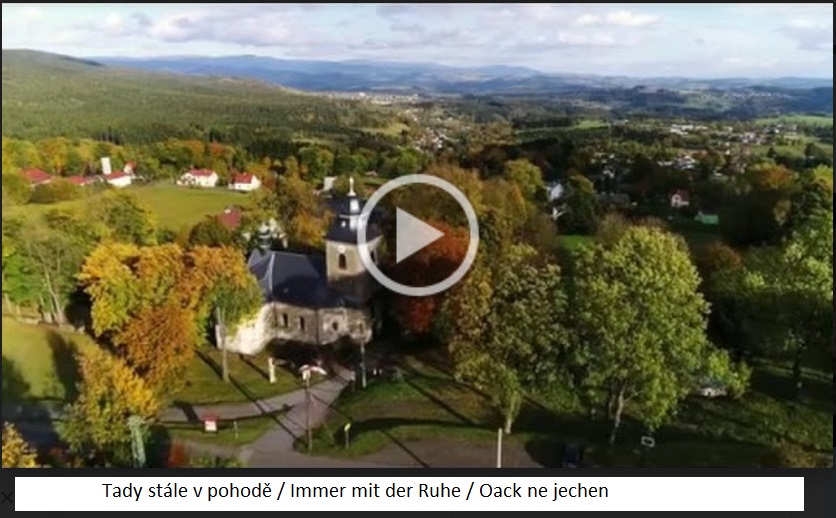Jistebsko
Jistebsko village was burnt down in August 1469, and even in 1548, it remained a deserted place, which was renewed only in the second half of the 16th century. Long ago, it used to belong to Zásada township administration, which had been founded by Czech colonists from Croatia around 1300. The other parts of the Zásada administration were the villages of Loužnice with six residents, Bratříkov with six farmers, Stanovsko with Pěnčín settlement, Lískov (present-day Krásná), Jastřabsko settlement (present-day Jistebsko), Čížkovice , and Dolní Černá Studnice . Only 24 families lived in the whole Zásada administration in 1565, and the number of houses was also 24, but sixteen years later, in 1581, this number grew to 31 families living in 31 houses.
Jistebsko was being renewed in the second half of the 16th century. Its residents were exclusively farmers. In 1852, Ferdinand Posselt established a small porcelain factory here, which was operational for twenty years. At the end of the 1860s, the first glass button factory was established near Kilian Wander´s house. In those days, as with everywhere in the neighbourhood, cutting beads was spreading, and buttons and chandelier parts used to be produced in new glass button factories. Also, in houses in Jistebnice, men used to press headpin tops and women used to string children´s necklaces and bracelets for decorated watches. After the introduction of cutting machines, many local men lost their livelihoods. After the rebellion in the town of Lučany in 1890, during which glass cutters tried to damage the cutting machines which had deprived them of their jobs, Šumburk and Jistebsko villages were policed by a single policeman.
Typical “driketa” - a glass button factory
In the first years of the 20th century, a few glass companies were operating in the village. Every company had its own patterns, and a team of button pressers, glass cutters, and stringers, who used to work from their own homes. The boom of the glass industry influenced the appearance of the village. Log houses covered with boards, houses with brick cowsheds, and small wooden barns began to disappear. In their place, imposing in those days, brick houses were built along the roads.
Shortly before World War I, the small sacramental tower and roofing of St. Joseph's church in Krásná were refurbished, and at this point pressed beads and bijou, together with its original content, new coins and the commemorative letter were put into the “button” as proof of prosperity of the locals and the whole parish. Also, a seigniorial sawmill was established in the village and this sawmill is operating up to now. Two veteran lime trees grow in the village – the first one by the road from Krásná to Huť is 250 years old and the second one by the road from Jistebsko to Krásná is 350 years old.
The Holy Sepulchre baroque chapel, built on the crossroads of the old roads, stands by the road from Jistebsko to Čížkovice. This place represents one of the stations on the road of pilgrimage to St. Joseph´s Church in Krásná and to the miraculous spring in Dolní Černá Studnice, and people probably used to walk through this place in processions from Bozkov to Hejnice.
Nowadays, the bus line runs through this place from Jablonec nad Nisou to Železný Brod via Dolní Černá Studnice and Krásná. The bus stop in Jistebsko is located by the famous and still operational restaurant “U Kaštanu”, and another lies by the road´s turning to the main road (which leads through Maršovice) next to the house called Dělnický dům, which was built for the sporting activities of the local working men´s club. The hall of the building is being reconstructed gradually, and sports being restored once again.
The Holy Sepulchre chapel







